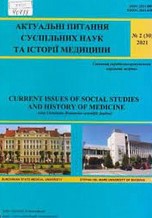ОСОБЛИВОСТІ ВИКОРИСТАННЯ ІНФОРМАЦІЙНО-ЦИФРОВИХ ТЕХНОЛОГІЙ ПРИ ПЕРЕКЛАДІ ДИПЛОМАТИЧНИХ МАТЕРІАЛІВ
SOME PECULIARITIES OF USING INFORMATION AND DIGITAL TECHNOLOGIES WHEN TRANSLATING DIPLOMATIC MATERIALS
Author(s): Zoya KudelkoSubject(s): Translation Studies, ICT Information and Communications Technologies
Published by: Видавництво ВДНЗ України « Буковинський державний медичний університет »
Keywords: digitization of diplomatic activity; translation of diplomatic materials; ICT; diplomacy; diplomatic texts;
Summary/Abstract: Digitization is being actively established in all spheres of social activity, transforming traditional ways of creating, distributing and analyzing information. Diplomatic activity has not become an exception in the processes of actualization of the digital space, gradually involving ICT tools in its practice. The study is focused on highlighting the implementation of digital innovations in diplomacy under the conditions of permanent influence of socio-cultural factors. The modern world is dynamic and developing at a high speed; therefore the trends of promotion or hindrance to digitization, which is used directly in the translation of diplomatic texts, change rapidly depending on many factors (socio-political, socio -economic, cultural, etc.). The purpose of the study is to understand the effectiveness of the use of information and digital technologies in the translation of diplomatic texts. The need for new media, translators and means of translation is noted, which will be in demand under the conditions of total globalization and informatization of the current socio-cultural space. Digitization has demonstrated the expediency of its use in diplomatic activity in general, so it is evident that this process will be extended to highly specialized clusters, including the translation of diplomatic texts. The research methodology is based on a combination of the use of general scientific and scientific-linguistic methods, due to which a comprehensive study of digitization algorithms in diplomatic translation was carried out. In addition, a scientific-synergistic approach is actively used, which ensures interaction between digital, linguistic, diplomatic and cultural-historical dimensions, which are actualized in scientific intelligence. Elements of novelty of the research focus on the interpretation of information and digital technologies in the context of their involvement in the process of diplomatic translation. Conclusion. Therefore, the ICT segment is actively gaining positions in diplomatic activity, fully meeting the trends of modern socio-cultural development. In a practice-oriented environment, diplomatic translation activities successfully use online resources to improve the quality and availability of translated materials. However, the digital segment is positioned as an auxiliary element or an alternative to traditional translation models, using a wide range of digital tools: online translators, artificial intelligence, interactive dictionaries, etc.
Journal: Актуальні питання суспільних наук та історії медицини
- Issue Year: 2023
- Issue No: 1
- Page Range: 117-120
- Page Count: 4
- Language: Ukrainian

